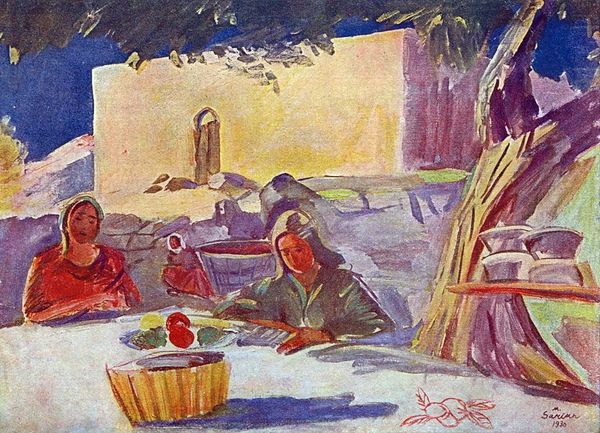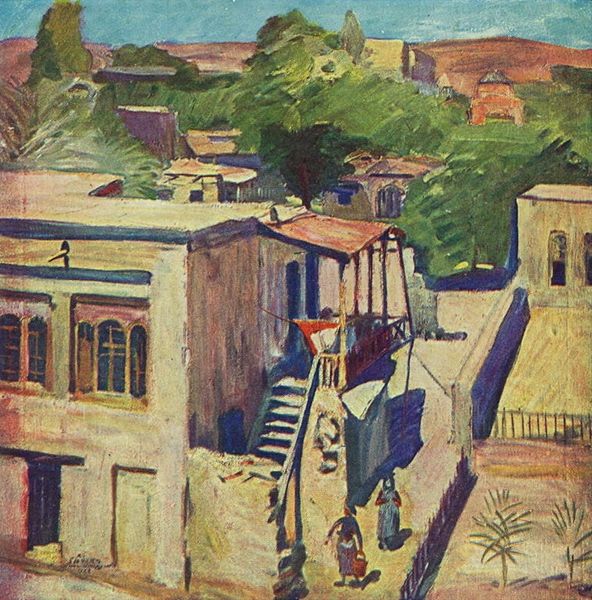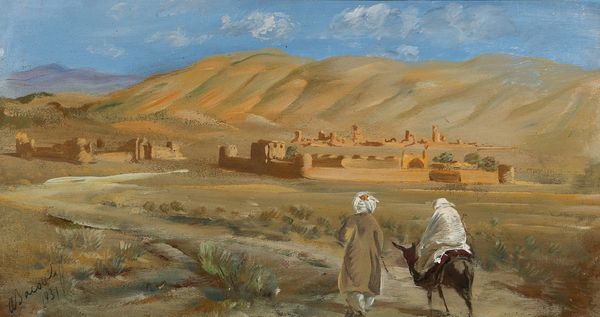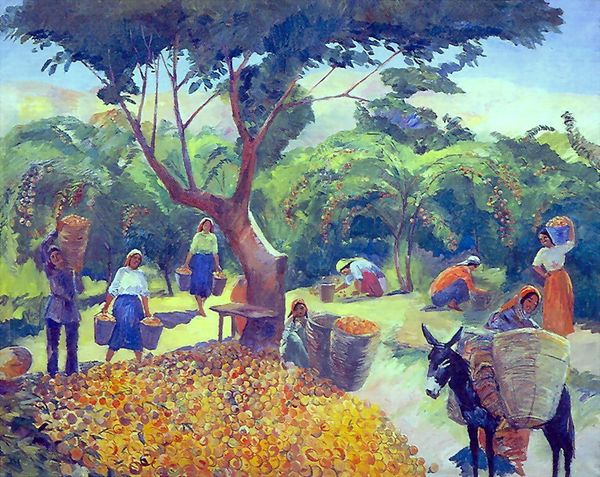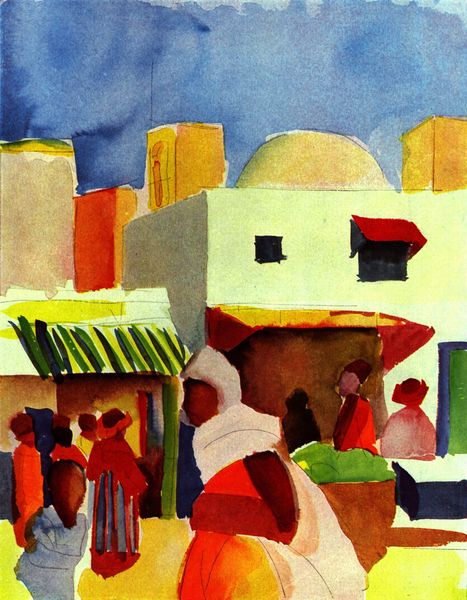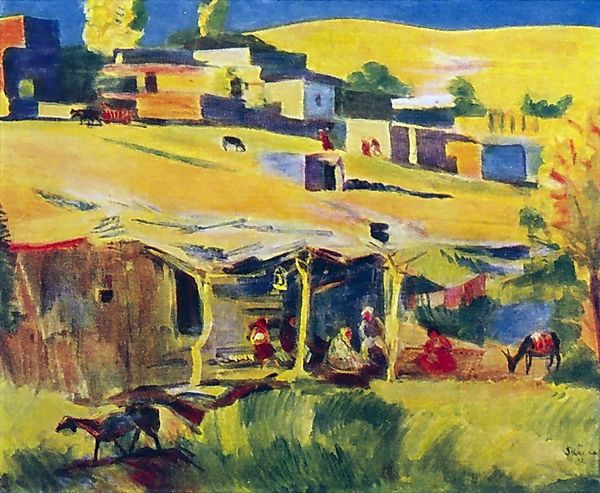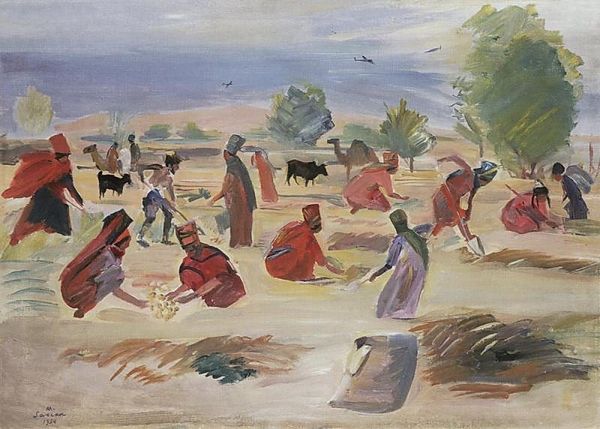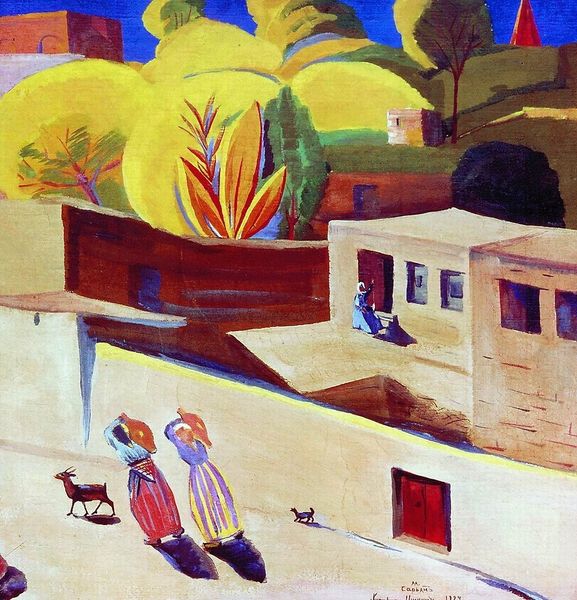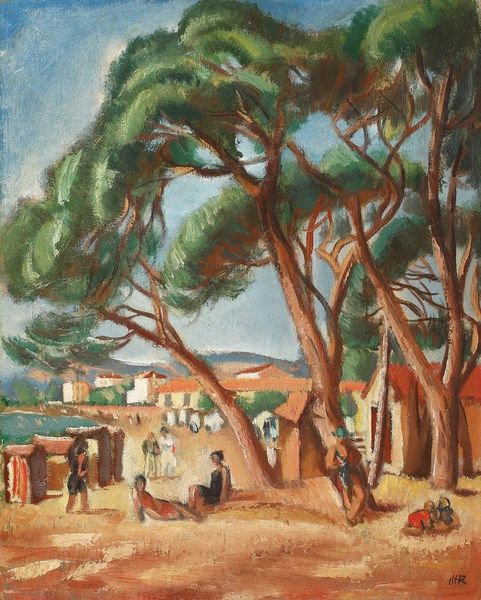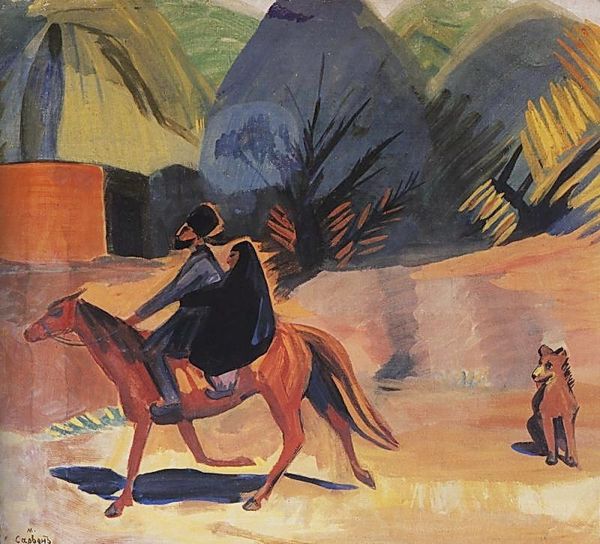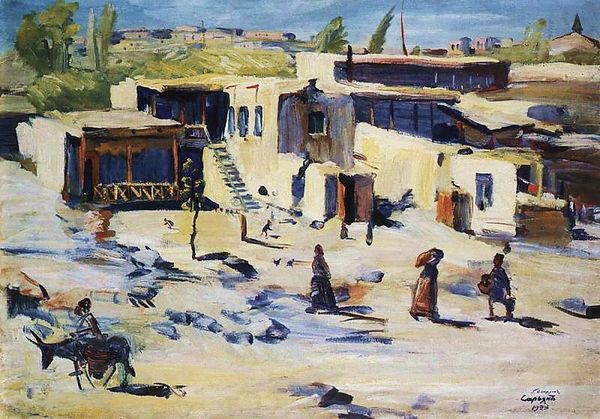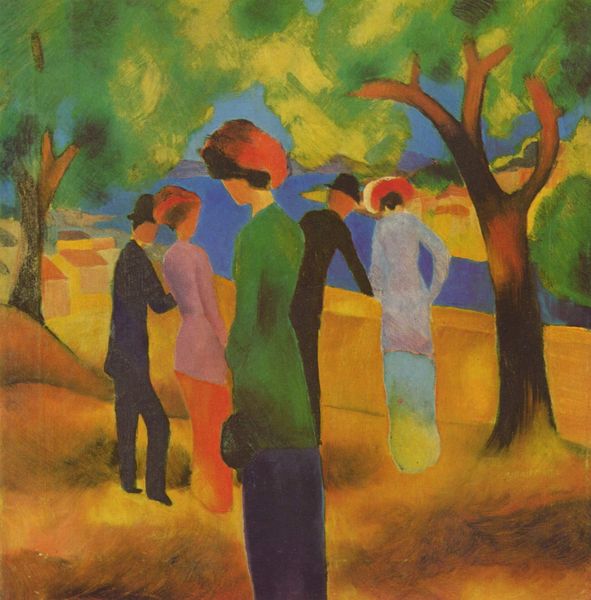
Copyright: Martiros Sarian,Fair Use
Curator: Martiros Sarian painted this watercolor, titled "Street and the ditch in Ashgabat", in 1934. It presents a seemingly quotidian scene of life in Turkmenistan. Editor: My first impression is one of sun-drenched simplicity, but something also feels intentionally stylized. It's very immediate, not aiming for photographic realism. Curator: Sarian, who worked between the Russian avant-garde and socialist realism, had a deep understanding of how the orientalist gaze shaped perceptions of Central Asia. His paintings often challenged or reinforced stereotypes. How might this particular artwork engage with or subvert such narratives? Editor: Right, I'm struck by how the work positions the public role of women. We see groups fetching water and wearing colorful garments. He highlights their central position to society rather than rendering them exotic others, an act often done for political gain in imagery from this time period. Curator: Precisely. This watercolor moves beyond simply documenting a scene. The layering of planes and distinct color palette speaks volumes, doesn’t it? Are there any specific techniques used to accomplish this positioning of women? Editor: Definitely, I would highlight the flatness of the painting combined with its vivid hues to suggest symbolic meaning, it creates an active portrayal. Consider, too, the absence of a clear perspectival vanishing point: our eyes are guided to multiple focuses across the frame. Curator: I concur, the deliberate composition complicates the orientalist aesthetic; yet we have to acknowledge that it was made in a complicated historical context of Soviet power that enforced a particular understanding of modernization and social roles. The challenge is how we frame his work within that landscape of constraints. Editor: So true. When considering the politics of imagery here, we need to hold competing views, it creates that crucial intersection. Curator: In the end, “Street and the ditch in Ashgabat” compels us to probe beyond idyllic impressions, towards complex questions about art's role in cultural and political change. Editor: Ultimately, it reminds us how even seemingly straightforward depictions contribute to the broader dialogues around identity, gender, and place, a powerful commentary.
Comments
No comments
Be the first to comment and join the conversation on the ultimate creative platform.

